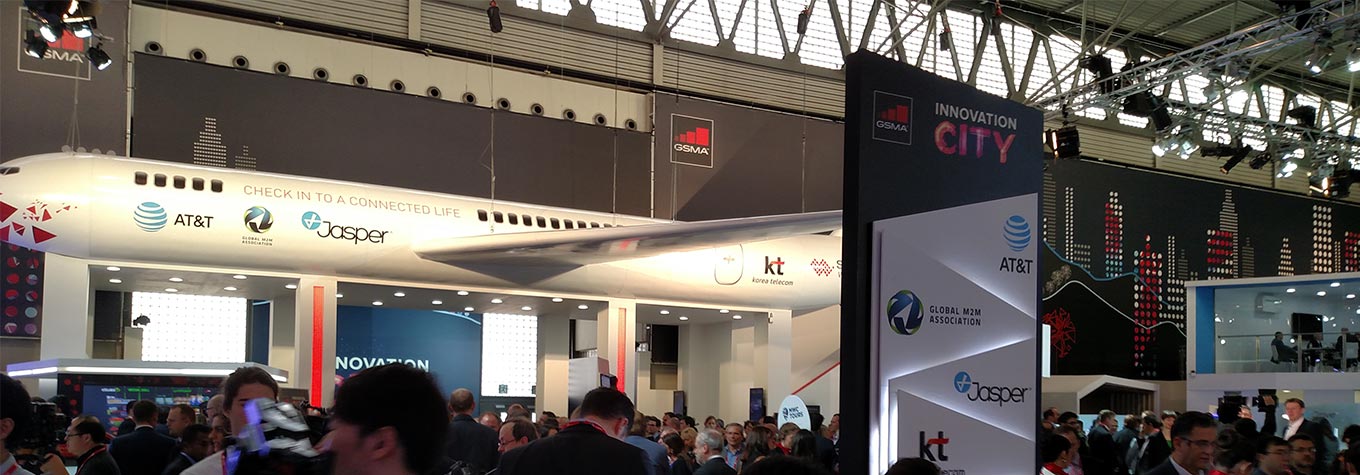For many of us, it’s hard to imagine life without the Internet (a reality that increasing portions of the population have never experienced). The advent of connected computers now seems like ancient history, and smartphones and tablets are everywhere.
From these multipurpose devices designed to take advantage of Internet connectivity in myriad ways, we’ve progressed to more specialized, narrowly focused devices. Think thermostats, lights, and locks we can monitor and adjust from afar; cameras to check on kids or critters; standalone speakers that can summon up all the world’s music; and bracelets that track our steps, stairs, sleep, and status, second to second.
Ours is clearly a connected world, and more and more devices are linking to the global network in more ways every day. This phenomenon, known as the “Internet of Things,” or IoT, was a major focus of Mobile World Congress 2016 in Barcelona. Every major technology conference seems to spawn new stories about the latest novelties connecting unlikely objects in unusual ways. Remember the smart fork that launched at CES a few years ago? While MWC had its share of head-scratching, crowd-pleasing gewgaws, it also showcased how the Internet of Things is driving large-scale change in all manner of industries.
Cars, Cows, and Contests
If any exhibitor went all-in on IoT this year, it had to be AT&T. The company occupied 10,000 square feet of prime event space in the conference’s Innovation City, and it made dramatic use of the real estate. Even for those who never ventured near the area, AT&T’s giant jetliner suspended from the ceiling was difficult to miss. The large-as-life prop was a visual tie-in to IoT solutions like connected luggage and shipment tracking. While never losing a suitcase or wondering when your order will arrive holds obvious appeal, initiatives like the smart car and “connected city” may be a tougher sell for some. Granted, there’s clear benefit to adjusting stoplights and scheduling road crews based on actual traffic, but concerns about sacrificing individual privacy for the collective good seem inevitable.
Fujitsu was another notable player in the Internet of Things game this year, focusing heavily on business and industrial applications. The Fujitsu booth featured a connected vehicle as well, in this case a smart van that tracks packages and tools being loaded or unloaded, as well as keeping workers connected even when mobile coverage is weak. The company did promote wearables as well, in the form of a specialized headset, wrist-mounted keyboard, and motion-sensing ring, all coordinating to help employees save time, improve accuracy, and enhance safety. Lest you think only intuitive, unamusing innovations were on display, Fujitsu also showcased its Connected Cow solution, which uses cattle leg bands to count steps and pinpoint when fertile females are feeling especially frisky, allowing livestock breeders to determine the ideal time to make their move.
Smaller, lesser-known companies also had a prominent presence during Mobile World Congress, both in the exhibition halls and beyond. The IoT Stars event, which took place offsite, brought together a dozen startups to pitch their IoT products to a jury of technology and mobile industry leaders. This year’s winners, Vayyar and Insulclock, which focus on 3D imaging and medication dosage tracking, respectively, demonstrate how the next generation of Internet of Things solutions could have a profound impact on practically any industry or individual.
The Connected Future
Even if you’ve never coveted a connected fridge or wanted to know precisely how much elevation you gained in a given day, the Internet of Things is inevitably coming your way. The truth is that it already affects most of us, in some ways we’re aware of and many more we may not notice. You may never own a Nest thermostat or Echo speaker, obsessively track the progress of a package or pizza, or wear something that contains a computer chip, but the accelerating advance of IoT all but ensures it will reach a product or service you use before long. One company is already developing a WiFi-enabled, user-friendly Linux computer, designed for IoT applications, that’s smaller than a matchbook and retails for $5. By the end of this year, we’ll be living in a world where it costs less to add the Internet to an object than it does to add a side salad to your lunch order.
Let the IoTakeover commence!


